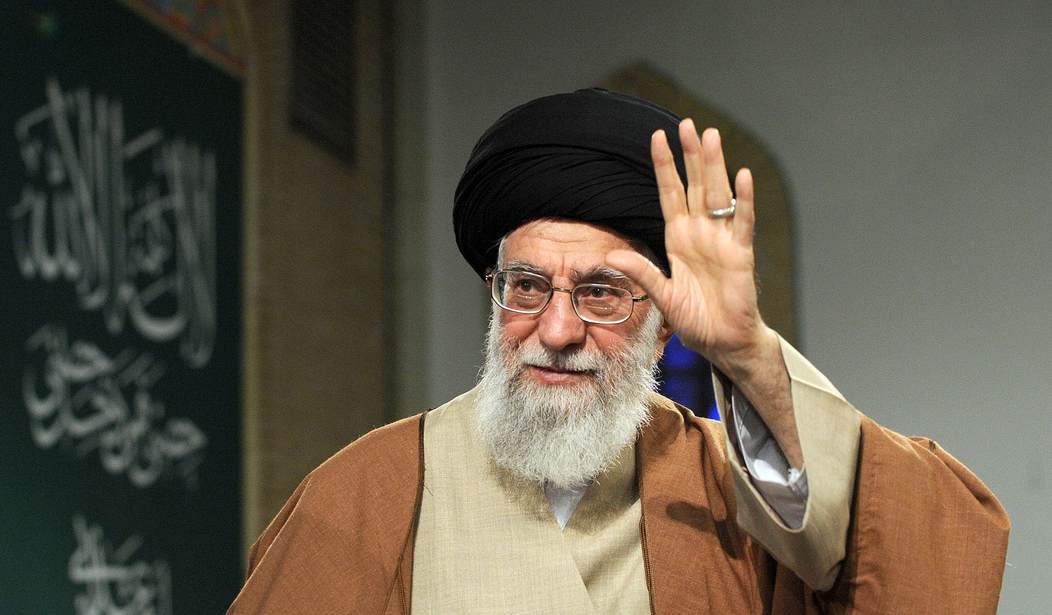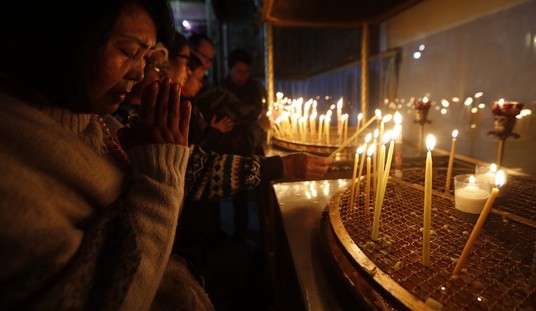Five of the Democratic presidential hopefuls, including Bernie Sanders, Elizabeth Warren, and Kamala Harris, say that if elected they would revive the JCPOA—the Obama administration’s gravely flawed nuclear deal with Iran that gave Iran a nuclear sunset clause, allowed it to keep developing ballistic missiles and centrifuges, concocted a ridiculously inadequate inspection regime, and freed up billions of dollars for Iran’s subversion and terror. Another declared candidate, Joe Biden, has harshly criticized President Trump for leaving the deal.
Meanwhile evidence is mounting that the combination of U.S. sanctions, Israeli military pressure, and—undoubtedly—covert activity by both countries is making things tougher and tougher for the mullahs and their proxies.
Asharq al-Awsat, a London-based Arabic newspaper, reports on its English website—citing sources from the Israeli (Hebrew) daily Maariv—that “Israel’s raids and various military operations in Syria, as well as the economic situation in Iran, [have] prompted Iran to give up a large part of its plans and limit its objectives in Syria.”
Sources said the turning point was Israel’s large-scale attack on Iranian targets in Syria last January 20, especially a strike on a weapons depot of Iran’s al-Quds Force at Damascus International Airport.
Israeli officials said that the “tightening U.S. sanctions on Iran will deepen this crisis greatly and…further damage [the] al-Quds Force’s plan[s] in the region.”
And if Tehran is already feeling the pinch and scaling back its regional subversion and its pressure on Israel, a Reuters report says it’s going to get a lot tougher economically for the Islamic Revolution this year.
The International Monetary Fund says that, while Iran’s economy contracted by 3.9 percent last year, it will shrink by 6 percent this year—and that projection was made before the Trump administration eliminated the last waivers on oil sales to Iran.
U.S. sanctions on Iran had already “denied its government more than $10 billion in oil revenue,” the report cites a U.S. official as saying.
Iran’s inflation, the IMF says, could hit 40 percent this year. And while the official rate for Iran’s currency, the rial, is now set at 42,000 rials to the dollar, on Sunday “its market rate stood at around 144,000 against the U.S. dollar.”
Under this state of affairs, it comes as no surprise that—as the New York Times reported already last month—funds for Iran’s allies in the region are drying up: “Syrian militiamen paid by Iran have seen their salaries slashed. Projects Iran promised to help Syria’s ailing economy have stalled. Even employees of Hezbollah, the Lebanese group that has long served as Iran’s closest Arab ally, say they have missed paychecks and lost other perks.”
As also reported in March, Hizballah’s financial travails have forced it to launch a fundraising drive as it tries to fight both a shortfall in funding from Tehran and the effects of direct U.S. sanctions on the Lebanese terror organization itself.
How much trouble is Iran in? Are the days of the ayatollah regime—an engine of 40 years of terror, war, hate, regional turmoil, domestic oppression, and severe human rights abuses—numbered?
It’s still too early to say. Signs are growing, however, that the Trump administration’s policy is on the right track. Among other positive indications, the weakening of Iran’s presence in Syria, and concomitant weakening of Hizballah in neighboring Lebanon, could remove a major flashpoint and source of instability as the chances of war between Israel and the Iranian axis recede.
Of course, to keep up the policy, the Trump administration has to stay in office. The mullahs in Tehran are undoubtedly praying that it won’t, and that it will be replaced by a Democratic administration that, like the Obama administration before it, will see the regime as a friend and partner.









Join the conversation as a VIP Member